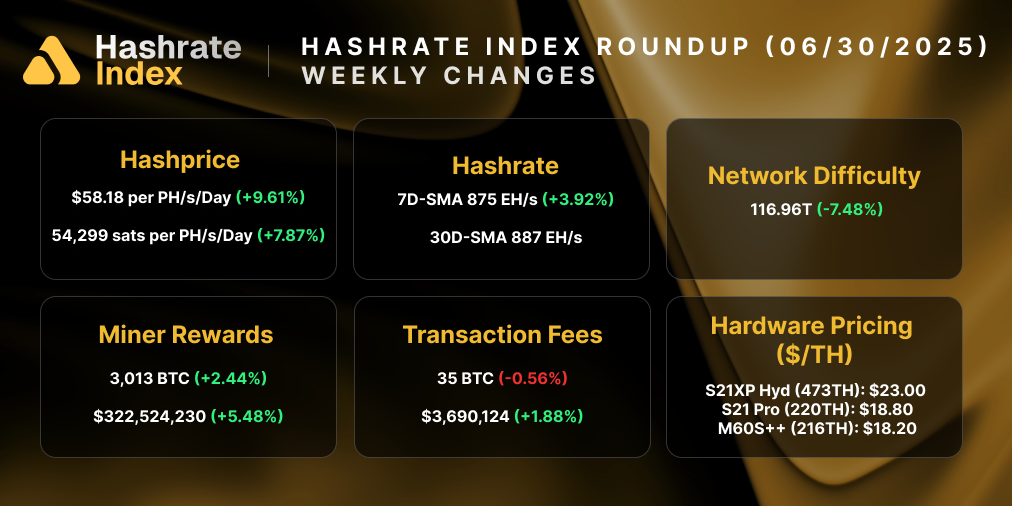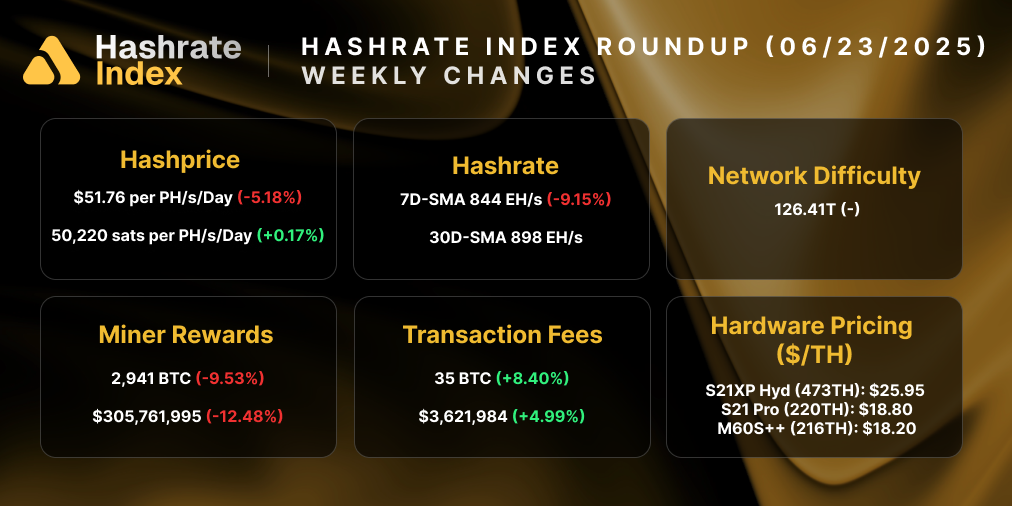
What WW2 Logistics Can Teach Miners About ASIC Optimization
This WW2 supply chain model could help BTC miners brace for the 2024 Bitcoin Halving.
As we approach the 2024 halving, many Bitcoin miners have gone into cockroach mode in an effort to reduce their operational costs and improve mining fleet efficiency at a time when margins are thin. With the bear market firmly entrenched, Bitcoin miners are seeing uncanny similarities to Bitcoin mining difficulty growth and Bitcoin price volatility that they last experienced in the 2016-2020 halving epoch.
With the global macro picture looking weaker, Bitcoin price has been range bound for the year, although this week it experienced an explosive move upward. In addition to this (and last) year's price woes, Bitcoin mining difficulty has increased by about 48% year-to-date. Mining is becoming more competitive all while Bitcoin is in a bear market, so miners are in the trenches looking for efficiency gains that will help them extract every satoshi they can before the halving happens.
In the pursuit of this goal, could miners learn a valuable lesson in resource management from the Allies’ supply chain logistics in World War 2?
Today's newsletter will explore that topic: how a linear programming model can help miners plan for bearish hashprice scenarios.
How a World War II Supply Chain Algorithm Can Help Optimize Bitcoin Hashrate
To start, let’s rewind 70-odd years to set the stage for a logistics method that has become common place in the world of international business and commerce – and which miners can use to plan their operations to optimize for energy efficiency.
During World War II, the Allies were limited in their capacity and resources to produce equipment and supplies to support the war effort in the Pacific and Atlantic theaters (the European theater took supply chain priority). With limited supplies of raw materials and factory output constraints, military planners needed a supply chain optimization method to produce the maximum value of supplies to troops on the ground.
A bright mathematician named George Dantzig created a practical algorithm to optimize supply chain planning constraints with the “Simplex Method” to maximize supply or minimize costs of production.
Today, business, science and engineering practitioners use Dantzig’s method to solve complex optimization problems by using linear programming models. Although other methods exist (polynomial-time), the simplex algorithm is widely used.
Optimizing Bitcoin Mining Fleets With the Simplex Method
In the early days of January 2023, the leadership team at Cathedra Bitcoin stated the following in a press release:
““In market conditions like these, one must think like a cockroach. After deploying these additional machines, improving the efficiency of some existing machines through underclocking, and further reducing our overhead, we will continue to generate positive EBITDA under current market conditions.”
At a very basic level, the management team at Cathedra reviewed their existing operational effectiveness, and realized they could increase profit by optimizing their fleet without adding new capacity or spending money on new mining rigs. In essence, they performed an analysis akin to a linear programming decision model to optimize finite resources: Bitcoin mining ASICs and power capacity.
Every Bitcoin miner is faced with the same constraint, and depending on their power costs, they may benefit from underclocking their rigs to maximize miner efficiency to improve profitability.
Building a Model for Bitcoin Mining Fleet Optimization
Our objective is to maximize net profit margin on mining income, while taking into consideration power capacity, difficulty changes on mining costs, and individual mining rig efficiencies. A miner's power cost (as well as their rig efficiency) will determine whether they should underclock, overclock, or run their machine at a baseline.
To model this out, let’s assume a hypothetical mining venture called Balmy Mining, which has 4.2 MW of power capacity. The venture's power cost is $0.058/kWh. Within the mining fleet, there are 600 M30S and 700 M30S+ units in operation. According to Hashrate Index at the time of writing, hashprice is $72 ($72/PH/day). For the purpose of this exercise, we can assume until the Bitcoin halving event this is our forecasted average daily hashrate. Luxor RFQ trading desk shows M30S spot price of $480/unit, $1459/unit for M30S+.
With this model, Balmy Mining's hypothetical constraints are:
- 600 M30S units (54 PH/s)
- 700 M30S+ units (61.2 PH/s)
- 4.2 MW power capacity
- $0.058/kWh power cost
To start modeling this out, we built a dataset for each mining rig model type based on its power consumption to understand its operational efficiency.
By analyzing each mining rig model's power and efficiency capabilities, we start defining power consumption and energy efficiency constraints within our mining fleet to build our linear programming model. To build our dataset, we used the Whatsminers Tool app to determine mining rig efficiency at various power limit levels. Within our analysis we are using M30S 90 TH and M30S+ 102 TH models.
Based on the efficiency of our two M30S series rigs, the chart below shows the efficiency gains in joules per terahash when running each mining rig at a specific power profile. The yellow line reflects the less efficient M30S 90 TH/s model, while the red line reflects the more efficient M30S+ 102 TH/s unit. As the curve shows, the more power the miner consumes, the less efficient it is on a joule-per-terahash basis.
The data points in the chart above are broken down in the table below.
Now that we have both rigs' efficiencies at different power levels, we use Open Solver in Google Sheets to backtest the most optimal mining rig power settings across our fleet to maximize mining income.
Using the current hashprice, we can calculate the expected mining profit margin per rig per power level. This modeling is the final step to help us pinpoint how to maximize mining income at different power levels.
Using Open Solver, we plug-in the constraints we outlined in the prior section, along with the mining profit power profiles to determine our most optimal fleet configuration.
The outcome is that, with 4.2 MW of power capacity, $72/PH/day hashprice, and $0.058/kWh power costs, both M30 models should run at full capacity.
In other words, Balmy Mining should run 600 M30S at 2.8 KW and 700 M30S+ at 3.5 KW of power to maximize mining income
Based on that operational footprint, the mining fleet will produce $2656 of daily net profit margin while consuming 4.13 MW of power.
What Happens if Hashprice Goes Lower?
Based on our initial model we assumed a fixed hashprice of $72/PH/day. In reality, though, hashprice is volatile, so miners may want to run this model on a weekly or daily basis in reaction to changes to hashprice. And they should definitely model out lower hashprice scenarios to prepare for the worst case.
For example, let’s assume network difficulty rises while Bitcoin’s price stagnates. What’s the optimal configuration if hashprice is $50/PH/day?We can quickly adjust the assumptions to see the best fleet configuration under a $50/PH/day scenario.
If Bitcoin network difficulty surges, Balmy Mining would need to run its 600 M30S at 2 KW of power and its 700 M30S+ at 2.3 KW of power. In that scenario, only 2.18 MW of power would be utilized. With excess power now available, Balmy Mining could purchase newer efficient mining rigs or sell a portion of their power capacity to other miners.
Optimizing Bitcoin Mining ASICs Will be Crucial for the 2024 Halving
We focused on the M30S and M30S+ rigs in this post, but we plan to expand our model to include many more popular rigs under other power / hashprice scenarios for our Hashrate Index Premium quarterly report, which we're offering as part of our Hashrate Index Silver Premium subscription.
Ultimately, miners should run efficiency analysis to stay ahead of nasty swings to hashprice / Bitcoin price. Such analysis could let them know if they are leaving money on the table by not under/overclocking; going further, aftermarket firmware like LuxOS for the Antminer S19 and S19XP series can help improve efficiencies even more.
The bottom line: with the 2024 Bitcoin halving approaching, miners should run the numbers to see if they are getting the best bang for their hash.
Hashrate Index Newsletter
Join the newsletter to receive the latest updates in your inbox.








